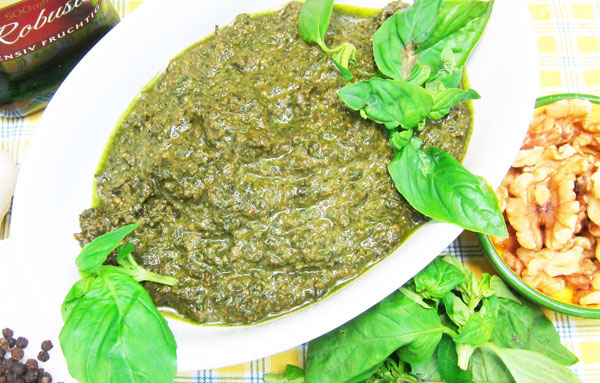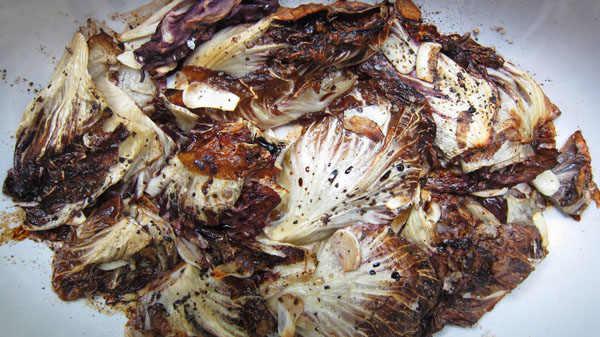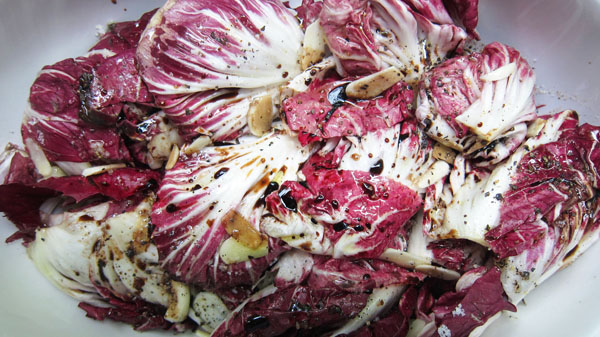Pastas & Pizzas

Andalusian Pisto with Pasta
I just love Spanish food and was recently watching Rick Stein’s Long Weekends; Cadiz (BBC TWO 2016). Cadiz, in western Andalusia, is a part of Spain I have not visited. I understand it is a little more difficult to get to so not inundated with tourists like the Mediterranean coast of Spain. The old city’s whitewashed buildings shimmer and the food and wines beckon. This is a cook’s dream and definitely on my list of must visits.
Andalusia is the southern most autonomous community of Spain. It lies south of the Iberian peninsula with a coastline fronting both the Atlantic ocean and Mediterranean Sea. With Morocco just to the south, it is often refereed to as the gateway to Africa. Ancient Andalusian ports were established by the Phoenicians. They were later occupied by the Romans, and then ruled by the Moors for more than 800 years. Christopher Columbus sailed from the Andalusian port of Cadiz for his second voyage to the Americas in 1493 and returned to the Andalusian port of Sanlucar de Barrameda. Today Andalusia is not only famous for its rich cultural past, but for its spectacular seafood, its superb sherry production and of course…Flamenco! This is Spain!
Duly inspired, I just had to get into the kitchen and cook up something that brought some of the flavors of this region of Spain to life. Spanish food is remarkably direct, full of earthy flavors, and is as colorful and alive as the Spanish themselves. The next best thing to taking a trip to Cadiz!
Pisto is a more robust Spanish version of the French ratatouille, which always includes eggplant, tomatoes, and peppers.For this recipe I have introduced the smoky flavor of Spanish red picante pimenton. I have also added meats, including pork, serrano ham, and Spanish chorizo if you like. Pisto is usually served as it is, but to my mind this pisto, or ragu if you like, makes a very robust and flavorsome sauce for pasta. A flourish of grated Monchego cheese finishes this pasta perfectly.
…or Serve as a tapa at room temperature with shaved Monchego.

Andalusian Pisto Tapa
Andalusian Pisto with Pasta    Serves 4 to 6
- 3 tablespoons Spanish olive oil
- 375 g/ 13 oz ground pork
- 1 large onion, peeled and diced
- 5 garlic cloves, peeled and minced
- 1 green bell pepper, trimmed, seeded, and finely diced
- 150 g/5 ½ oz thinly sliced dry cured Serrano ham, cut into small pieces
- 1 large (or 2 small) eggplant, unpeeled, diced into ½ inch cubes
- 1 teaspoon toasted cumin seeds, ground
- ½ teaspoon toasted coriander seeds, ground
- 1 teaspoon dried marjoram leaves, crumbled
- 500 g/18 oz crushed tomatoes
- 1 to 1 ½ tablespoons picante smoked Spanish paprika (El Avon or La Chinata brands)
- sea salt
- freshly ground black pepper
- water as needed to thin sauce
- 3 tablespoons dry Spanish sherry
- 50 g/1 ¾ oz thinly sliced Spanish Chorizo, halved (optional)
- 3 tablespoons thinly sliced broad leaf parsley
- Manchego cheese (curado 6 months) for grating
- pasta of choice, cooked al dente
Heat a large skillet medium high heat. Add the olive oil and when it begins to smoke add the ground pork and cook until the pork begins to brown. Lower the heat to medium and using a slotted spoon transfer the pork to a bowl and set aside.
Promptly add the onions to the skillet and saute until they are soft, about 5 minutes. Add the garlic and saute another minute. Then add the sliced peppers and the serrano ham and saute until the peppers are softened. Stir in the reserved browned ground pork until the ingredients are well combined,
Add the eggplant to the skillet and season with the cumin, coriander, and marjoram. Continue sauteing until the eggplant is slightly colored and softened.
Add the crushed tomatoes and bring the contents of the pan to a simmer. Season with Spanish paprika, salt, and ground pepper. Lower the heat to a gentle simmer. After about 15 minutes stir in the sherry and continue cooking another 10 minute or so. Add the chorizo if using and cook until the sauce is the right consistency, adding water to thin the sauce if needed .
While the pisto is simmering heat a large pot of water and bring to a rolling boil. Add salt and the pasta and stir from time to time until the pasta is cooked al dente.
Taste the sauce and correct the seasoning to your liking.
When you are ready to serve drain the pasta and place it back into the pot and stir in some of the pisto to evenly coat the pasta. Transfer the pasta to individual pasta plates. Top the pasta with more pisto and scatter the parsley over each serving. Add a good grating of Manchego over each portion and serve.

Braised Zucchini with Pasta
There are many ways to cook zucchini, but for me simply braising is by far the best way to bring zucchini’s delicate flavor to full bloom. Once braised there are so many quick and easy applications awaiting.
Zucchini, in the squash family, is native to the Americas. However the zucchini we are now familiar with is a hybrid that was developed in Italy in the 19th century and named zucchini, the diminutive of zucca. Colors range from pale to deep green as well as light yellow to a deep orange. Zucchini is usually harvested while still young, about 6 to eight inches in length, with seeds that are still soft and tender. Left to grow zucchini can reach up to a meter in length.
Anyone who has grown zucchini knows full well it is the garden’s star over achiever. The harvest can be continuous and down right overwhelming, as are the challenges for the cook who is faced with “oh no, not zucchini again.â€
More often than not zucchini is cooked into other dishes like a Provencal ratatouille which is splendid, but the zucchini’s real personality is somewhat lost in translation. Be that as it may, zucchini can really shine on its very own if cooked properly.
Using this simple braising method requires only a few ingredients and a well tended low heat braising on the stove top that slowly coaxes out a nuanced flavor of summer that could only come from zucchini.
Ounce braised the zucchini can then be used as a side dish, pureed for a soup that can be served chilled in the summer or warm as fall approaches, or as a sauce for pasta along with braised zucchini and poached chicken. This is a pasta sauce that has become one of my very favorites when cooking up a summery meal .
Braised Zucchini
- 2 ½ pounds 6 to 8 inch zucchini, trimmed
- 3 tablespoons olive oil
- 1 ½ cups finely diced onions
- 3 plump garlic cloves, peeled and minced
- ½ teaspoon dried marjoram
- 4 ½ cups chicken stock (or water), hot
- ½ cup cream
- 1 cup grated Parmigiano
- flaked sea salt and freshly ground white pepper to taste
Cut the trimmed zucchini into quarters lengthwise. Slice the quarters into ½ inch slices. Place in a bowl and set aside.
Place a wide heavy bottomed pan on the stove over medium low heat. Add the olive oil and when the oil slides easily in the pan add the onions and saute for 5 minutes, stirring from time to time.
Add the garlic and cook another 2 minutes while stirring.
Then add the sliced zucchini and fold them into the onion mixture. Reduce the heat to low and cook for 25 to 30 minutes. Stir frequently and be sure to lift the onions off the bottom of the pan so they do not burn.
Stir in the marjoram after about 15 minutes of cooking time and season sparingly with salt and pepper.

Braised Zucchini
After about 20 minutes you will have to stir more frequently, being sure to continuously lift the onions off the bottom of the pan. Once the zucchini is very soft, just barely colored, and looking slightly glazed remove the pan from the heat.
At this point, if you are intending to use the braised zucchini for a pasta remove about ¼ of the braised zucchini and set aside to use for the pasta later.
If you are intending to serve the braised zucchini as a side dish, add a little cream and a little hot stock and to the pan and stir to combine. Then add some grated Parmigiano, season with salt and pepper, and serve.

Braised Zucchini as a side dish.
Otherwise set the pan with the braised zucchini back onto the stove over medium heat. Add about two thirds of the hot stock (or water) and bring to a boil. Then lower the heat to a simmer and cook for about 20 to 30 minutes or until the liquid is reduced by half and the zucchini is very soft.
Remove from the heat, cool a few minutes. Then blend with an immersion blender (or transfer to a blender) and blend until smooth. If the puree seems very thick add a little more hot stock and blend.
Return the mixture to the heat and bring back up to a low simmer. Slowly stir in the cream until incorporated and then stir in the Parmigiano. Continue to stir 1 minute and then taste. Add additional salt and pepper if needed. Stir well and set aside.

Braised Zucchini Soup or Pasta Sauce
Cool the puree to room temperature if you are intending to use as a soup. Then cover and refrigerate. Serve chilled or warmed slightly.
If you are intending to use the puree as a pasta sauce you may want to reduce the sauce a little bit more.
Meanwhile divide the poached chicken into bite size strips and reheat with a little chicken stock or water.
Boil your pasta until cooked al dente and drain.
Add the reserved braised zucchini and the warmed chicken to the hot reduced sauce and stir. Then fold in the cooked pasta.
Transfer the pasta  to individual pasta bowls, spooning any remaining sauce over the pasta. Grate Parmigiano over the pasta and serve.

Fresh Sweet Italian Basil Pesto
When summer comes around pesto is one of my go to favorites to brighten up so many summer meals. Fresh Italian sweet basil is available by the bushels full during the summer months and making batches of pesto to stash away for the winter is an annual ritual.
I have previously posted five pesto recipe variations, but not a truly Italian basic pesto recipe which follows. Take a look at the other pesto recipes below.
The word pesto refers to the pestle which has been traditionally used to grind the pesto ingredients in a mortar through the ages in Italy. More modern methods for making pesto, such as using a mezzaluna, a blender, or a food processor have not replaced the mortar and pestle, but have made the process more compatible with the time restraints of the modern cook. What ever the method used, Pesto remains enshrined as one of Italy’s most revered sauces. So, whether you are a staunch traditionalist ready for a work out or a modernist with little time to spare, the rewards of bringing this glistening emerald green pesto to the table will be apparent.Â
I have included the optional addition of butter to this recipe which has become quite popular in Italy. The butter gives the pesto a richer silky texture that works beautifully with pastas. You may well be a committed traditionalist, as I too have been, but why not give the addition of butter a try.
Fresh Sweet Italian Basil Pesto:Â makes about 2 1/2 Â cups
- ½ cup walnuts or pignole (pine nuts) or a combination of both
- 1 teaspoon flaked sea salt
- 6 black peppercorn, coarsely ground
- 3-4 garlic cloves, peeled and minced
- 2 tablespoons softened unsalted butter (optional)
- hands full of fresh sweet Italian basil/ about 3 well packed cups of torn leaves
- ½ cup grated Parmigiano
- ½ cup grated Pecorino, Sardo, or Romano
- 1 cup extra virgin olive oil or a little extra if omitting the butter
Place the nuts, sea salt, ground peppercorns, garlic, and butter (if using) in a mortar, blender, or food processor, and grind or pulse into a coarse mixture.
Add the basil leaves and grind or pulse until the mixture is semi-smooth.
Add the cheeses and grind or pulse until evenly mixed with the other ingredients.
Begin adding the olive oil a tablespoon at a time while grinding or pulsing. Gradually you can increase the flow of olive oil as the pesto begins to emulsify and the pesto is rather smooth but with some texture remaining.
Taste and add additional salt if needed.
Transfer to a container with a lid and set aside if using within an hour or so. Ideally the pesto should be used at room temperature, especially with pasta or other cooked applications. Slightly chilled is fine when using as a spread or condiment.
Refrigerated the pesto will last 5 days, although with each passing day the brilliant green color will begin to fade.
Freezing is the best option for longtime storage.
Other pesto recipes well worth a try.
Pesto alla Siciliana & Pesto Trapanese (see recipe here)
Spinach Pesto with Panchetta (see recipe here)
Pomegranate Glazed Pork Loin with Pistacio Pesto (see recipe here)
Pesto…Diverso  (see recipe here)
Salsa Romesco (see recipe here)

Roasted Radicchio
Radicchio’s gorgeous pale green, rose, or lush purple maroon colored leaves are a familiar addition to salads these days, but it need not end there! In Italy radicchio heads are more often roasted or grilled which opens up a whole new window of possibilities for other applications you may never have thought of. The wilted bitter leaves take on a more mellowed flavor that works beautifully when added to risottos, pastas, stuffing for game birds, topping pizzas, bean salads, as a side with grilled meats or fish or, my favorite, tucked into an omelet along with a grating of Italian parmigiano.
Radicchio (treviso) is an Italian leafy chicory (cicoria) in the same family as the more familiar Belgian endive (witloof). There are many varieties that are strictly associated with the location where they are locally grown in Italy. The small round headed Rrosso di chioggia is the most common variety found outside Italy, with deep maroon leaves with bright white ribs. All varieties are perennial with the best crops in spring and fall, although now widely available year round.
Radicchio is rich in antioxidants, B vitamins, vitamin K, manganese, potassium, copper, iron, zinc, and folic acid. Reason enough to include radicchio on your weekly shopping list and enjoy the healthy benefits of this savory addition to your cooking repertoire.
The preparation couldn’t be easier!
Roasted Radicchio (Basics)Â Â serves 4 to 6
Preheat oven to 425f/220 c
Equipment: A baking tray lined with parchment
- 4 medium size heads radicchio
- ¼ cup best quality olive oil
- 4 garlic cloves, peeled and thinly sliced
- flaked sea salt (Maldon)
- freshly ground pepper
- 2-3 tablespoons balsamic vinegar

Radicchio prepared for roasting
Remove any tougher or wilted outer leaves of the radicchio. Cut each head into quarters lengthwise and place in a bowl. Douse with the olive oil. Add the garlic and season with salt and pepper. Turn the quarters gently to evenly coat them and place on the lined baking tray, cut side down. Drizzle half of the balsamic vinegar over all and place in the oven. Roast until the leaves are wilted, about 12 minutes.
Remove from the oven and gently turn the slices over. Drizzle with the remaining balsamic vinegar and return to the oven to roast another 8 minutes. The leaves will darken, especially around the edges. A little charring is OK, but keep an eye on them towards the end of the roasting time.
Remove from the oven and set aside to cool.
Applications:
Depending on what you plan to do with the radicchio will determine how to cut it. Generally speaking the quarters should be sliced crosswise, the width depending on the application, although ¼ inch thick slices works for most applications. Be sure to drizzle the pan juices over the sliced radicchio before adding it to another dish.